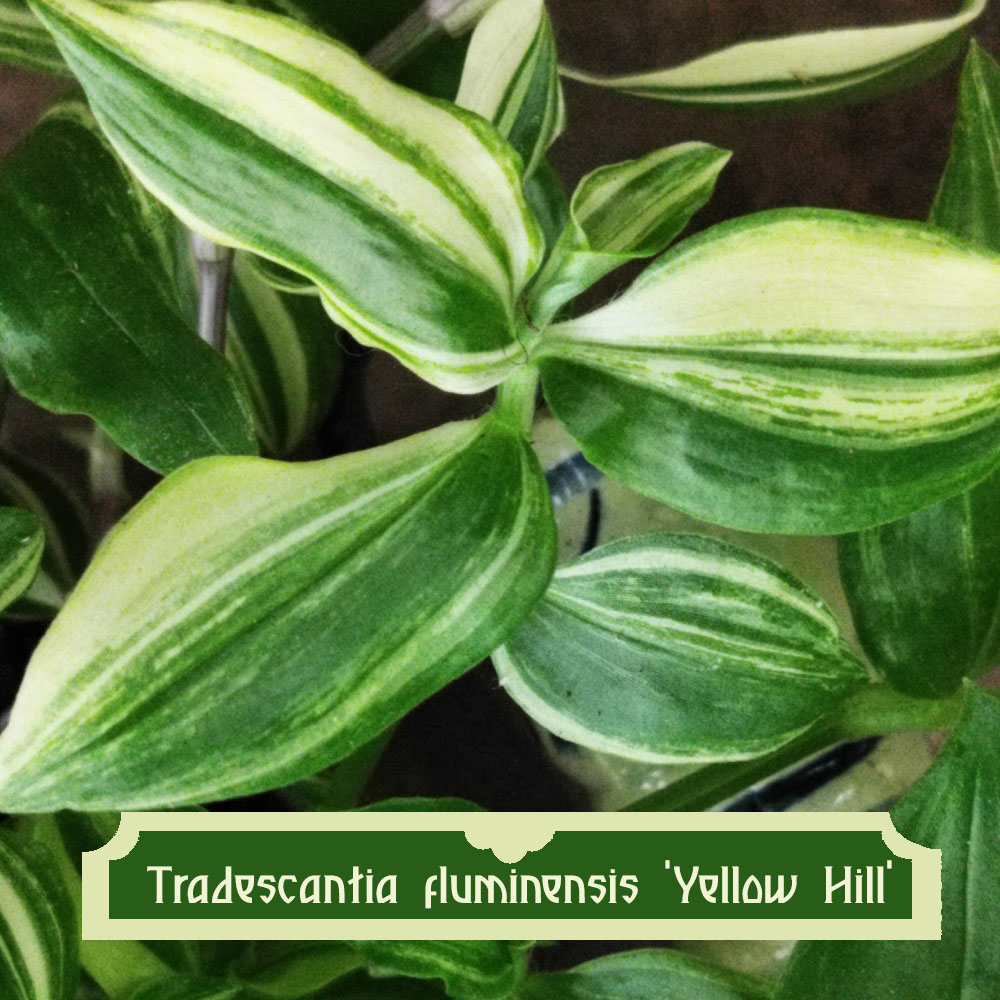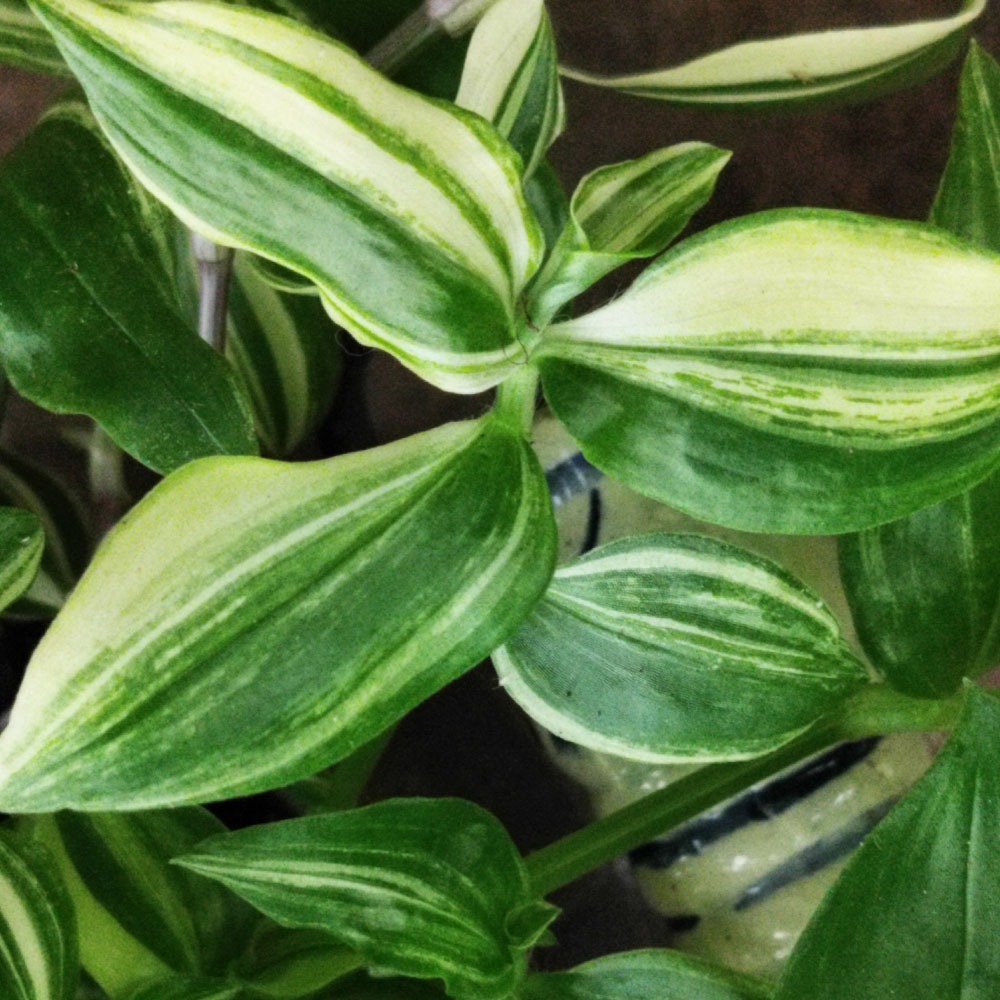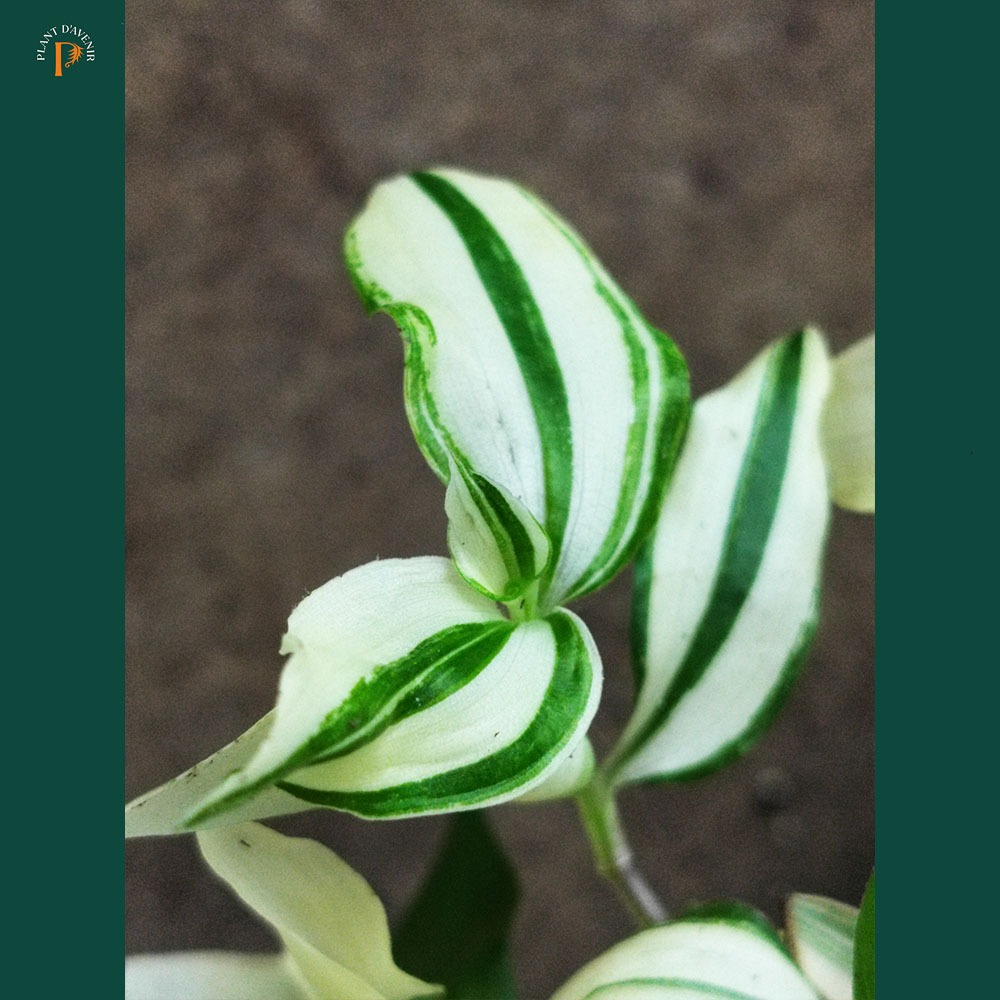No products in the cart.
Tradescantia fluminensis Yellow Hill
A fast-growing, sprawling tropical perennial with random, mottled yellow and green variegation.
Rated 0 out of 5
0 customer reviews
4,90 €
Only 40 item(s) left in stock!
Tags: chaud, evergreen, feuillage persistant, graphique, ground cover, perennial, secheresse, vivace, vivace en pot, xeriscaping
SKU: pda381
Category: Balcony-Friendly, Better Indoors, Bouquet, Evergreen, Frost Hardy, Ground Cover, The Stunners

Tradescantia fluminensis Yellow Hill
4,90 €
Only 40 item(s) left in stock!
Tradescantia fluminensis Yellow Hill is a fast-growing, sprawling tropical perennial with random, bright yellow/green variegation and delicate pale flowers.
This variety has more of a trailing tendency, its compact yet spreading habit makes it ideal for rockeries, borders, containers, and hanging baskets.
The leaves are brightly variegated- creamy yellow and bright green, soft to the touch, attached to fleshy stems that root at any node that is on the surface.
The flowers are pale pink/white with three petals and approx. 13–25 mm in diameter. They are produced in small clusters in summer but do not produce seeds.
👨🌾GARDENING TIPS👨🌾:
-
- In lower light, the stems of Tradescantia fluminensis Yellow Hill can become slightly longer and thinner and sometimes they will drop their leaves > trim them back and change the lighting , we should be back on track
- On the other side, 🌞extremely intense light occasionally causes faint pink areas on the leaf undersides > the absence of chlorophyll in the leaves means that they have no defense, they are burning.
-
Regular trimming maintains compact growth and encourages branching.
-
Easily propagated from cuttings year-round; rooting in water is highly effective > check out our step by step article on How to do Tradescantia cuttings. (this one is perfect for beginners)
-
Works beautifully in mixed containers, as groundcover in rockeries, or cascading from raised planters – mix with Tradescantia pallida Purpurea or Heuchera ‘Black Pearl’ for high color contrast
Learn more about the Tradescantia family:
The Tales & The Botany: Tradescantia fluminensis Yellow Hill
This variety is often sold under the name‘Aureovariegata’, an invalid unpublished name used for multiple cultivars. Beware of it – if a Tradescantia bears the name Aureovariegata, it means that the owner does not know what the plant actually is.
Tradescantia, commonly called spiderwort, is a genus in the Commelinaceae family, comprising around 75–90 species of perennial herbs.
Native to the Americas, especially Central and South America, these plants are prized for their vivid foliage and delicate, three-petaled flowers, making them favorites for borders, rockeries, and indoor displays.
The genus was named by John Tradescant the Elder, a 17th-century English botanist and gardener who introduced many North American plants to Europe.
In fact, Tradescantia was one of the first North American plants introduced to European gardens in the 17th century, and some cultivars are now so widespread they are considered naturalized in many temperate regions worldwide.
🌸Floral Morphology: Tradescantia fluminensis Yellow Hill
Tradescantia fluminensis Yellow Hill flowers are small, actinomorphic, and trimerous, with three bright white petals.
Flowers are borne in clusters (cymes) at the tips of stems and are short-lived, often opening for a single day but produced in succession to provide extended bloom.
Leaves are alternate, simple, and often lanceolate, with a succulent or slightly fleshy texture in some species. Many cultivars have variegated or purple-tinged foliage, adding ornamental value even when the plant is not flowering.
🍃Reproductive Biology
Tradescantia species are hermaphroditic, capable of self-pollination, though insects such as bees and hoverflies are the primary pollinators.
Fruits are capsular, splitting into three sections containing small seeds.
Some species also propagate readily via stem cuttings, which root easily in soil or water, making Tradescantia a favorite for vegetative propagation and indoor plant enthusiasts.
🌍Ecology & Adaptations
Tradescantia thrives in temperate to subtropical environments, so in France we’re limited to using them in:
-
- Container and indoor gardening: This is a perfect variety for container/indoor gardening as it trails, making it ideal for hanging baskets.
Key adaptations include:
-
-
Rapid vegetative growth.
-
Easy propagation
-
Moderate drought tolerance
-
Pest resilience
-
Foliage interest
-
Origin:
Unknown
| Weight | 0,5 kg |
|---|---|
| Flower Color | Lilac |
| Soil | Loam, Sandy, Well-Draining |
| Exposure | Indirect Sun, Half Sun/Half Shade |
| Frost Tolerance | -1°C to -5°C |
| Size | 0.1m H x 0.6m W |
Reviews
0
Rated 0 out of 5
0 customer reviews
5
0
4
0
3
0
2
0
1
0
Only logged in customers who have purchased this product may leave a review.
Related Products
Tanacetum densum subsp amani
A shrublet composed of soft, finely divided silvery gray-white leaves.
A shrublet composed of soft, finely divided silvery gray-white leaves.
Rated 0 out of 5
Hieracium maculatum Leopard
A native perennial with blue-green leaves and a tall yellow flower
A native perennial with blue-green leaves and a tall yellow flower
Rated 0 out of 5
Tradescantia Blushing Bride
Gorgeous blushes of pink and white that appear in the coldest nights.
Gorgeous blushes of pink and white that appear in the coldest nights.
Rated 0 out of 5
Trachelospermum asiaticum ‘Ogon Nishiki’
Jasmine with colorful foliage and lovely white flowers in summer
Jasmine with colorful foliage and lovely white flowers in summer
Rated 0 out of 5
Delosperma cooperi
A dwarf perennial known for its vermillion colored flowers
A dwarf perennial known for its vermillion colored flowers
Rated 0 out of 5
Sedum album
A low, multi-color ground cover.
A low, multi-color ground cover.
Rated 0 out of 5
Echinacea purpurea
A perennial with purple flowers all summer long
A perennial with purple flowers all summer long
Rated 0 out of 5
Vinca minor
Looping elegance and ability to form a low flowering ground cover
Looping elegance and ability to form a low flowering ground cover
Rated 0 out of 5
Stachys byzantina
Silky white-grey leaves and tall striking flowers
Silky white-grey leaves and tall striking flowers
Rated 0 out of 5
Erigeron kavinskianus
A daisy-like carpet of flowers
A daisy-like carpet of flowers
Rated 0 out of 5
Artemisia Valerie Finnis
A semi-evergreen, aromatic variation on the theme of Artemisia.
A semi-evergreen, aromatic variation on the theme of Artemisia.
Rated 0 out of 5
Hellebore argutifolius
Winter flowering perennial with marbled blue-green leaves
Winter flowering perennial with marbled blue-green leaves
Rated 0 out of 5
Mentha x piperita ‘Chartreuse’
A spicy mint, known for its use in the production of liqueurs and herbal teas.
A spicy mint, known for its use in the production of liqueurs and herbal teas.
Rated 0 out of 5
Cerastium tomentosum var. columnae
A grey-green spreading ground cover from the mountains.
A grey-green spreading ground cover from the mountains.
Rated 0 out of 5
Euphorbia myrsinites
Known for its draping form of silver-gray foliage and radiant blooms.
Known for its draping form of silver-gray foliage and radiant blooms.
Rated 0 out of 5
Kalanchoe daigremontiana
A toothy succulent from Madagascar, known as the Mother of Thousands.
A toothy succulent from Madagascar, known as the Mother of Thousands.
Rated 0 out of 5
Melissa officinalis
A perennial plant in the mint family that is adored by bees, royal families and tea drinkers.
A perennial plant in the mint family that is adored by bees, royal families and tea drinkers.
Rated 0 out of 5
Euphorbia cyparissias Clarice Howard
A Euphorbia that resembles a soft little cyprus tree
A Euphorbia that resembles a soft little cyprus tree
Rated 0 out of 5
recent view product
Tradescantia Blushing Bride
Gorgeous blushes of pink and white that appear in the coldest nights.
Gorgeous blushes of pink and white that appear in the coldest nights.
Rated 0 out of 5
Sedum “Weihenstephaner Gold”
A low-growing sedum with a thick, dependable dark-bronze/green foliage and prolific flowering cycle.
A low-growing sedum with a thick, dependable dark-bronze/green foliage and prolific flowering cycle.
Rated 0 out of 5
Erinus alpinus ‘Dr Hähnle’
A cushion covered in carmine flowers
A cushion covered in carmine flowers
Rated 0 out of 5
Solidago ‘Golden Shower’
Beautiful showers of yellow flowers
Beautiful showers of yellow flowers
Rated 0 out of 5
Rosmarinus officinalis Majorca Pink
Mediterranean aromatic perennial with soft pink flowers
Mediterranean aromatic perennial with soft pink flowers
Rated 0 out of 5

















































There are no reviews yet.